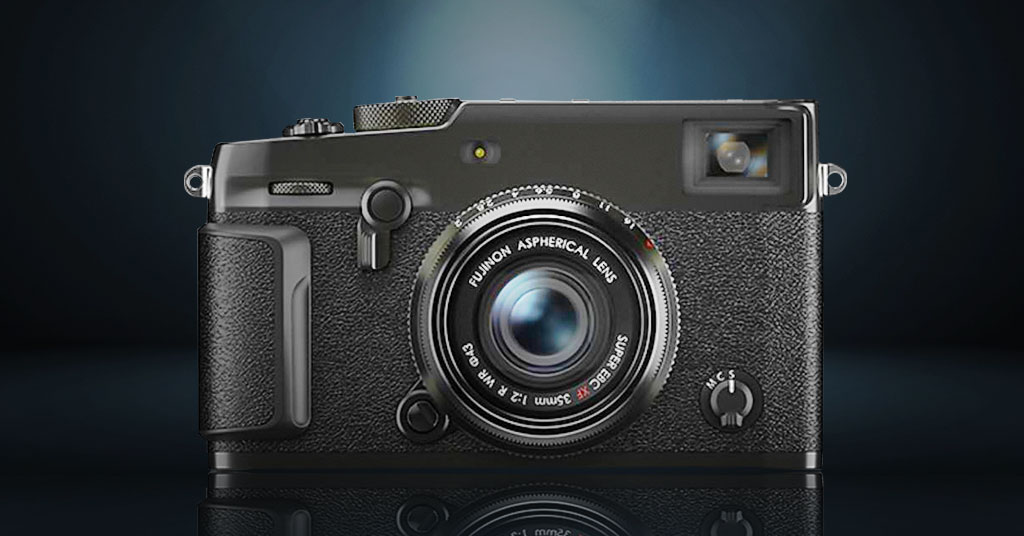The Fujifilm X-Pro3 was a fascinating camera. Launched back in October 2019, it took the hybrid viewfinder magic of the X100 line and brought it to an interchangeable-lens body. It was unique, bold, and honestly, a little controversial—especially thanks to its backward-folding screen. Now, more than five years later, we’re finally hearing whispers from Fujifilm about its successor. Not just a simple sensor upgrade, but something they promise will be a real evolution. Let’s look closely at what’s going on with the X-Pro series, what we know so far about the X-Pro4 (or maybe X-Pro5?), and what we hope to see when it finally arrives.
Today’s Best Fujifilm X-Pro3 Amazon Deal

Mason knows photography inside and out. With 15 years of hands-on experience, he’s written about cameras, lenses, and gear of all kinds. He even spent five years as a journalist, diving deep into music and writing sharp, engaging stories. Now, Mason shares his photography knowledge, helping readers find the right gear and perfect their skills. He’s also proud of his unbeatable Wordle streak!
A Quick Look Back at the Fujifilm X-Pro3
When it hit the market, the Fujifilm X-Pro3 instantly stood out from the crowd. Its 26.1MP APS-C X-Trans IV sensor was cutting-edge for its time, delivering beautiful image quality with impressive color depth and dynamic range. However, technology never stands still, and today it has been eclipsed by the newer 40.2MP sensor found in cameras like the X100 VI. Still, at launch, the X-Pro3 felt like something truly special.
One of its boldest moves was the introduction of a hidden rear screen. Instead of a typical LCD display always in view, Fujifilm tucked it away behind the camera, encouraging photographers to focus more on shooting rather than constantly reviewing images. It also featured a clever hybrid viewfinder, allowing users to toggle between an optical view for a more traditional experience and an electronic view for precision framing. That 0.5-inch OLED EVF, packing 3.69 million dots, offered a crisp, detailed look at the scene, perfect for modern shooting, yet the option to flip back to a classic optical view really appealed to longtime rangefinder fans.
For those of us who love the tactile experience of photography, the X-Pro3 felt like a real gift. But it wasn’t without its flaws. Some users reported concerns about the hidden screen’s durability, and over time, sales began to cool. By late 2023, Fujifilm officially discontinued the X-Pro3, leaving many to wonder: was this the end of the beloved X-Pro line?
Fujifilm Speaks Out: The X-Pro4 Is Coming
Thankfully, Fujifilm hasn’t given up on the X-Pro series. In a 2025 interview with PetaPixel, they confirmed that a successor is coming, eventually. And not just any successor. Fujifilm made it clear that they aren’t interested in simply cramming the current X-Processor 5 and a newer X-Trans sensor into the old X-Pro3 body. They want to do more. Something significant enough to reignite professional photographers’ love for the series.
They even admitted that so much time has passed since the X-Pro3 that consumer expectations are sky-high. Simply updating the sensor, like the X100 VI did with its stabilization and higher resolution, wouldn’t cut it. Fujifilm knows the X-Pro4 needs to be more ambitious—and that means they’ve made development harder for themselves.
Why the X-Pro Line Matters
The X-Pro1 wasn’t just any camera; it was historic. It marked the start of Fujifilm’s X-series of interchangeable-lens cameras and introduced the world to X-Trans sensors. If the X-Pro1 had failed, there’s a good chance the X-series—and even the GFX medium format line—might never have existed.
Thankfully, the X-Pro1 was a success, and it paved the way for everything Fujifilm has done since. Its successors, the X-Pro2 and X-Pro3, continued to push the series forward, though each with its own quirks. The X-Pro2, released in early 2016, is still remembered fondly as one of the best cameras Fujifilm ever made.
Considering the series’ importance to Fujifilm’s history, it’s no wonder people have been anxiously awaiting news of the X-Pro4. Some have even feared it was abandoned altogether. But it’s clear now: Fujifilm isn’t letting go of the X-Pro legacy.
Why the Delay?
Looking at the timeline, the X-Pro line has had a fairly consistent cycle. X-Pro1 came out in 2012. The X-Pro2 followed four years later in 2016. X-Pro3 arrived in late 2019, just a bit ahead of schedule. By that rhythm, we should have seen the X-Pro4 by late 2023 or early 2024.
But it didn’t happen. One big reason for the delay may be the unique design decisions in the X-Pro3, particularly the hidden screen. It was bold, but it may have also led to some reliability issues, specifically with the ribbon wiring harness connecting the rear screen. Problems like that can turn what seems like an exciting innovation into a headache for both customers and manufacturers.
Plus, there’s no denying the market shifted. Mirrorless cameras have grown more competitive, and users now expect faster autofocus, better video specs, and other modern features that rangefinder-style bodies don’t naturally emphasize. Fujifilm likely had to go back to the drawing board to figure out how to balance tradition and innovation.
What Might Be New on the X-Pro4?
At this point, everything is speculation—but some guesses feel more grounded than others. First, it seems highly likely that the X-Pro4 will jump straight to the X-Trans VI sensor, skipping the X-Trans V generation altogether. That would mirror what happened before; the X-Pro series skipped the X-Trans II sensor too.
If Fujifilm goes this route, what could X-Trans VI bring? Probably not a huge megapixel jump. Instead, expect improvements in speed, autofocus accuracy, heat management, and maybe faster sensor readouts. For photographers using the X-Pro4 primarily for street, documentary, or travel photography, those upgrades could make the camera feel smoother and more responsive without fundamentally changing its character.
We might also see some new JPEG tools—something Fujifilm always nails. Rumors suggest possibilities like split-toning, mid-tone adjustments, or new film simulations. Increasing the number of Custom Settings from seven to ten (or even more) would be fantastic for photographers who love building their own looks.
And about the screen? It’s doubtful Fujifilm will return to the hidden design of the X-Pro3. Instead, they might adopt a more traditional tilt screen similar to the X-T5 or X100 VI, offering more flexibility without abandoning the spirit of the camera.
Competitor Comparison Leica Q3 & Ricoh GR IIIx
Leica Q3
Compared to the Leica Q3, the Fujifilm X-Pro4 is expected to feel more traditional and versatile rather than high-end luxury. The Q3’s 60MP full-frame sensor, Summilux 28mm f/1.7 lens, and 8K video make it a powerhouse for both stills and video, but it’s a fixed-lens system built for a different kind of photographer. The X-Pro4 will likely stick with an APS-C sensor, offering lower resolution but greater flexibility through interchangeable lenses. It may also feature upgrades like weather sealing and faster autofocus, but it won’t chase specs like 8K video or massive 5.76m-dot EVFs. Instead, Fujifilm will probably focus on delivering a more tactile, analog-style experience that’s still modern enough to compete.
Ricoh GR IIIx
When compared to the Ricoh GR IIIx, the X-Pro4 is expected to be a major step up in versatility and build quality. The GR IIIx is compact and simple, with a fixed 40mm lens and a 24.2MP APS-C sensor, built primarily for street shooters who value minimalism. The X-Pro4, however, will likely offer interchangeable lenses, a hybrid optical/electronic viewfinder, better ergonomics, and possibly improved weather sealing. It’s for photographers who want a purist shooting experience but also need the flexibility that a fixed-lens compact like the GR IIIx simply can’t provide.
What Fujifilm Should Keep (and Avoid)
While improvements are welcome, many X-Pro fans would agree: less change is better. Keep the core experience intact. That means maintaining the hybrid viewfinder, the rugged weather-sealed body, and the simple, intuitive control layout.
There’s plenty Fujifilm should not do. No oversized grips. No crazy video specs at the expense of photography features. No abandoning the optical viewfinder. The X-Pro line succeeds because it feels pure and focused, not because it tries to be everything for everyone.
We hope they lean more toward the design of the X-Pro2. It struck the perfect balance between old-school charm and modern capability. If the X-Pro4 (or X-Pro5) feels like a spiritual successor to the X-Pro2, a lot of us will be very happy.
When Will the X-Pro4 Actually Arrive?
Here’s the million-dollar question. If Fujifilm had stuck to the original cycle, we’d already have it. But since that didn’t happen, most guesses point toward either late 2025 or early 2026.
Given Fujifilm’s typical pattern, it seems likely they’ll release other models first. An X-E5 could arrive soon, likely with an X-Trans IV sensor paired with the newer processor. We might also see an X-T30 III or a new 1-inch sensor compact camera rumored to be in the works.
Once those clear the deck, the X-Pro4 will step into the spotlight, probably introducing the X-Trans VI sensor alongside it. That would make early 2026 a reasonable target—about 15 to 16 months from now.
Final Thoughts
The Fujifilm X-Pro4 has a lot riding on it. Fans have been waiting patiently (and sometimes not so patiently) for over five years. The good news? Fujifilm seems to understand that the next X-Pro can’t just be a minor upgrade. They’re aiming for something truly meaningful—something worthy of the series’ legendary status.
If they stick to what makes the X-Pro line special while updating the parts that need it most, the X-Pro4 could be one of the most exciting cameras Fujifilm has ever made. It may still be a little ways off, but based on everything we know so far, it’s worth waiting for.


